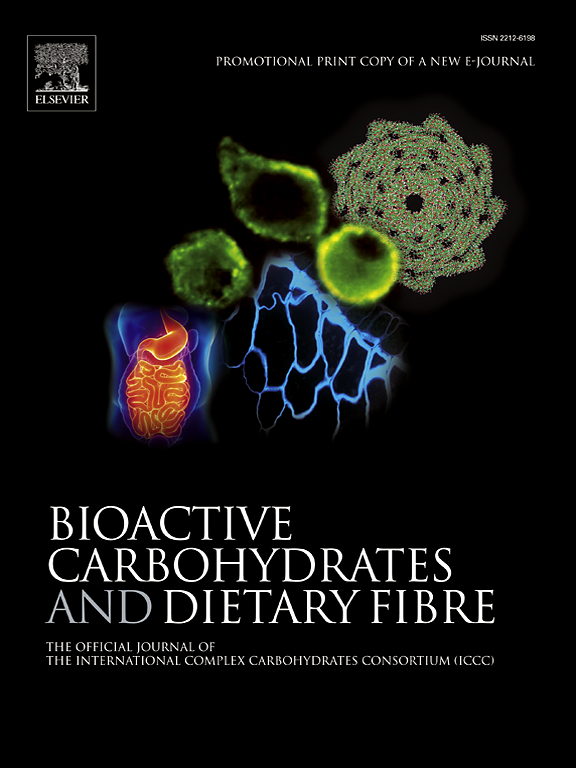Purification, structural characterization, and in vitro fermentation properties of okra polysaccharides
IF 3.6
引用次数: 0
Abstract
In this study, two components of okra polysaccharide (OP-12 and OP-14) were isolated and purified. Their chemical structures and in vitro fermentation characteristics were studied to explore the structure-activity relationship in improving intestinal microecology. Results showed that OP-12 and OP-14 had structural differences. Compared with OP-14, OP-12 had higher neutral sugar content, molecular weight (Mw), and degree of branching. The most abundant monosaccharides in OP-12 were rhamnose (Rha) and galactose (Gal), while those in OP-14 were galacturonic acid (GalA). Methylation and nuclear magnetic resonance (NMR) analysis suggested OP-12 and OP-14 were likely pectin polysaccharides containing rhamnogalacturonan I (RG-I) domain and homogalacturonans (HG) domain, respectively. Furthermore, OP-12 and OP-14 with different chemical structures had differences in bacterial density, sugar consumption rate, short-chain fatty acids (SCFAs) production and intestinal microbiota composition during the fermentation process. OP-14 was rapidly utilized by intestinal flora at the early stage, whereas OP-12 was preferentially consumed in the middle-late stages. Correlation analysis revealed that the monosaccharide composition, degree of branching, and Mw of okra polysaccharides were closely related to the regulation effect of the gut microbiota and the types and concentrations of SCFAs.

秋葵多糖的纯化、结构表征及体外发酵特性研究
本研究分离纯化了秋葵多糖中的OP-12和OP-14两种成分。研究其化学结构和体外发酵特性,探讨其改善肠道微生态的构效关系。结果表明,OP-12和OP-14在结构上存在差异。与OP-14相比,OP-12具有更高的中性糖含量、分子量(Mw)和分支度。OP-12中最丰富的单糖是鼠李糖(Rha)和半乳糖(Gal), OP-14中最丰富的单糖是半乳糖醛酸(GalA)。甲基化和核磁共振(NMR)分析表明,OP-12和OP-14可能是含有鼠李糖半乳乳酮I (RG-I)结构域和高半乳乳酮(HG)结构域的果胶多糖。此外,不同化学结构的OP-12和OP-14在发酵过程中存在细菌密度、糖消耗速率、短链脂肪酸(SCFAs)产量和肠道菌群组成的差异。OP-14在早期被肠道菌群迅速利用,而OP-12在中后期被优先消耗。相关分析表明,秋葵多糖的单糖组成、分枝度和分子量与肠道菌群的调节作用以及scfa的种类和浓度密切相关。
本文章由计算机程序翻译,如有差异,请以英文原文为准。
求助全文
约1分钟内获得全文
求助全文
来源期刊

Bioactive Carbohydrates and Dietary Fibre
Agricultural and Biological Sciences-Food Science
CiteScore
6.00
自引率
0.00%
发文量
38
期刊介绍:
 求助内容:
求助内容: 应助结果提醒方式:
应助结果提醒方式:


